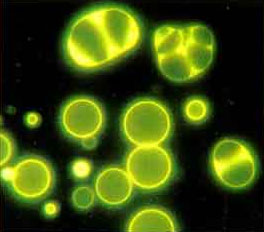Origins of Life
In the beginning...

The Earth began as a twinkle in the Solar Nebula's eye some 4.5 billion years ago and it - along with the rest of the planets, asteroids, meteors and comets - formed.
Matter hurled together, until finally there were substantial bodies of planets and their moons, sweeping left-overs in their orbits. During this era, approximately one billion years ago, the newly-born Earth was pummelled mercilessly by these left-overs. This was the "Hadean Period" a time when the Earth's surface was broiled, flash-fried into shape.
Incoming asteroids vaporized themselves and the part of the surface they impacted. This turned into a seering plasma that tsusamied around the globe causing rapturous explosions and eruptions.
First signs of life

The origin of life is one of the great mysteries in the universe. We know that life began at least 3.5 billion years ago, because that is the age of the oldest rocks with fossil evidence of life on Earth. These rocks are rare because subsequent geologic processes have reshaped the surface of our planet, often destroying older rocks while making new ones. Nonetheless, 3.5 billion year old rocks with fossils can be found in Africa and Australia. They are usually a mix of solidified volcanic lavas and sedimentary cherts. The fossils occur in sedimentary cherts.
Chemical traces of life have also been detected in slightly older rocks. In Greenland, a series of ancient metamorphosed sediments have been found. Analysis indicates the sediments were deposited about 3.8 billion years ago. They also revealed carbon isotope signatures that appear to have been produced by organisms that lived when the sediments were deposited.
In all cases, life as we understand it must have water. This general rule is true on Earth and is thought to be true elsewhere in the solar system. Currently, life is being sought on Mars where water may have once flowed on the surface and Europa where a subterranean sea of water may exist beneath its icy surface.